Anyway, like Gudetama, Peko-chan is the star of a staggering amount of merchandise. You can find just about anything – from phone cases and pens to socks and poker chips – featuring Peko-chan. There are also the wildly popular Nendoroid and Bearbrick figurines.

(image from hype.tokyo)
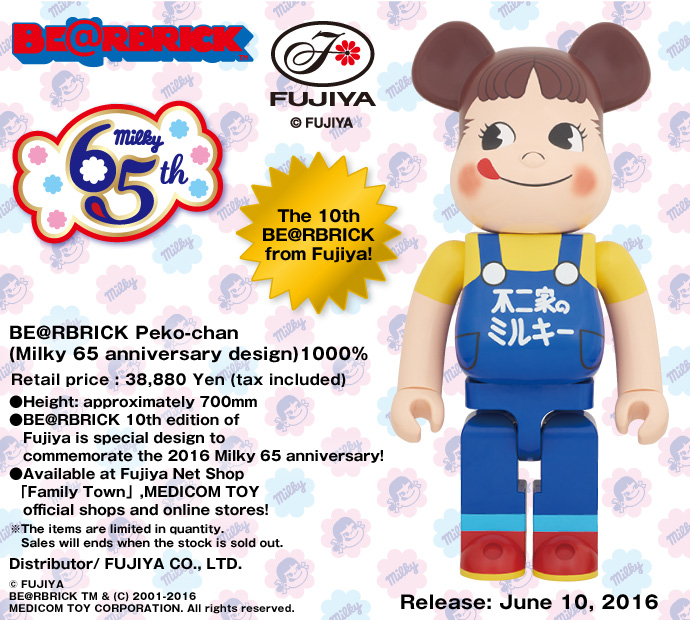
(image from bearbrick.com)
I'm particularly fond of the crossovers with other Japanese characters like Monchhchi and, of course, Gudetama.
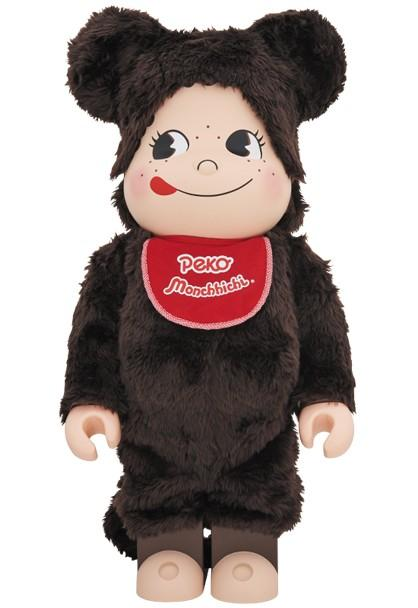
(image from gacha-hobbies.com)

(image from jpinfo.com)
It's not surprising how much merch Peko appears on, given that she's as widely recognized in Japan as Ronald McDonald is in the U.S. There was even a whole pop-up museum devoted to the character in late 2010 to celebrate her 50th anniversary.
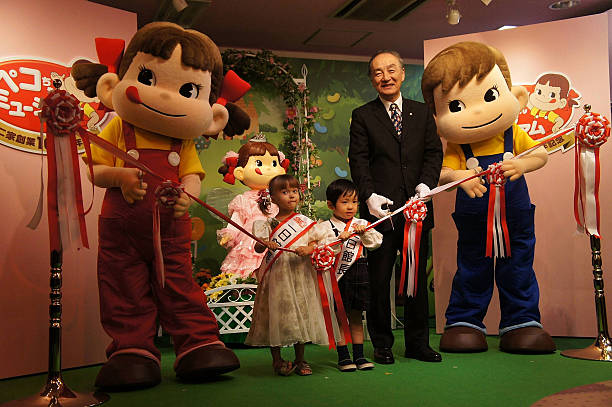
(image from gettyimages.co.uk)
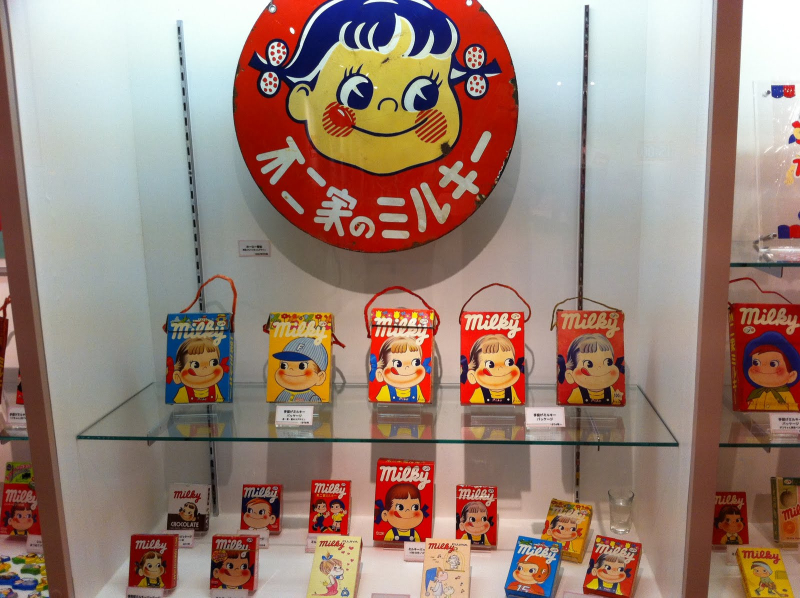
(images from kn-mydays.blogspot.com)
However, some claim there is a rather dark side to this seemingly harmless character. Apparently there's an urban legend that's circulated for years claiming that Fujiya based Peko on a real-life child…who was also a cannibal. Those cute little dots on Peko's cheeks? They're not the innocent blush of childhood but her mother's blood. As the story goes, during WWII there was a massive food shortage in Japan, and a mother and young daughter living in a small village (the father was off fighting the war) were literally starving. The selfless mother cuts off a piece of flesh from her arm to feed her little girl. And then: "When Peko took her first bite of human flesh, she was amazed of how sweet the flesh tasted. She proceeded to kill her mother and eat her entire body. Peko continued her life as a cannibal. They say that the reason why her tongue is always out is because she's licking her mother's blood off her cheeks. The name of the candy is 'Milky', but when you rearrange the sounds, it becomes 'Kill Me', which were her mother's final words. That's why the slogan of the company, when translated from Japanese is, 'Milky tastes like Mama'". Um, that's pretty disturbing. Unfortunately Poko is also part of this very macabre tale. "After devouring her mother, Peko-chan was still hungry. She attacked Poko, breaking open his skull in order to eat his brain. Poco was in such pain that he committed suicide by biting off his own tongue and swallowing it. They say that the reason why Poco-chan never has his tongue out in the pictures is because he doesn't have one, and the reason why he always wears a blue hat is to hide his broken skull and exposed brain." Yikes.
In looking at this collection again, I think I'm going to put the Holika Holika stuff in our off-site storage space because right now I'm a little freaked out and kind of don't want it in the house. I don't really believe this story is the basis for Fujiya's Milky mascots – I maintain they were meant to be totally innocuous and cute characters for children, and the gruesome tale is just one of those stupid fake stories from the internet's nascent days – but it's creepy nevertheless, especially when some of the early versions of Peko and Poko were downright terrifying. I'm wondering if, over the years, Fujiya made a deliberate attempt to show Poko without his hat to defuse these rumors.
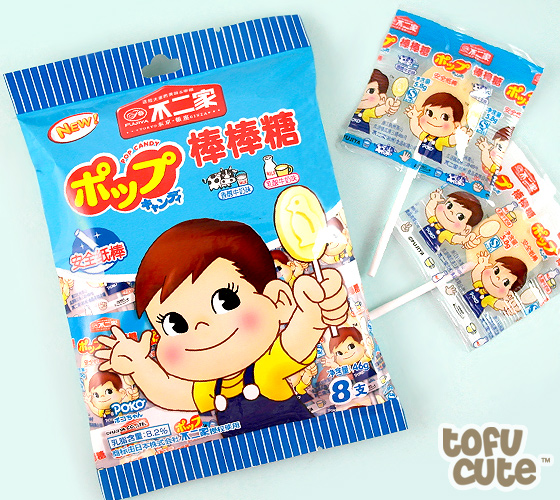
(image from tofucute.com)

(image from rakuten.com)
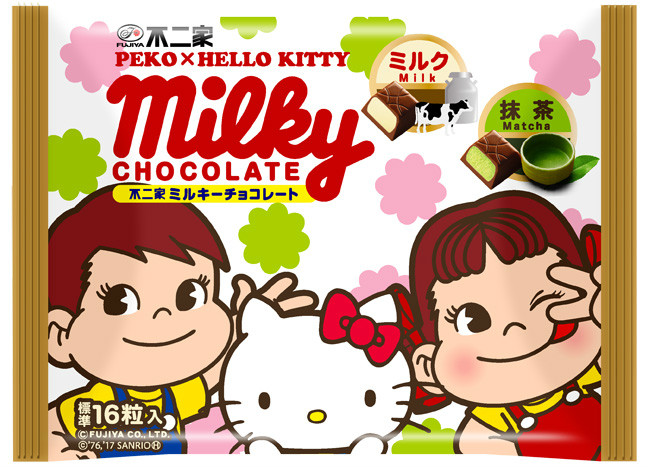
(image from press.ikidane-nippon.com)
Anyway, scary urban legends aside, I'm pleased to see such a well-loved mascot on a makeup collection. As with Gudetama, I'm still scratching my head as to why a Korean brand is presenting this collaboration rather than a Japanese company, but I guess it's good there's a makeup representation at all. I just wish there were more versions of Peko as there were with the Gudetama collection. While the Peko collection was huge, it didn't reflect many variations of the character. I would have loved to see (non-creepy) vintage iterations or a depiction of Peko and Poko playing with makeup. It's basically the exact same packaging as the candy, which is cute, but they could have done a little more. Then again, I might have ended up buying almost all of it the way I did with Gudetama, which is not great for the Museum's budget.
What do you think of Peko? Had you heard of her before? And do you think she's really a ravenous cannibal?


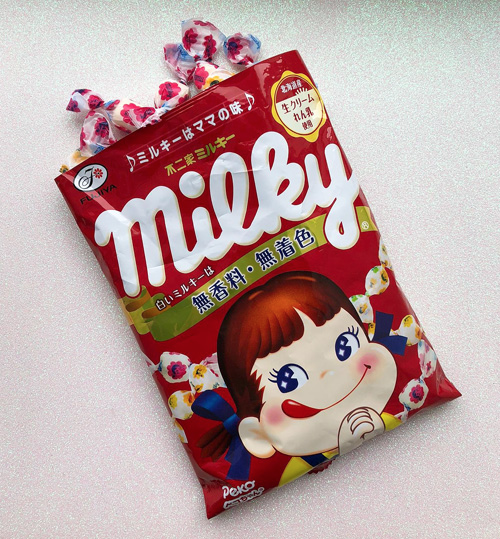
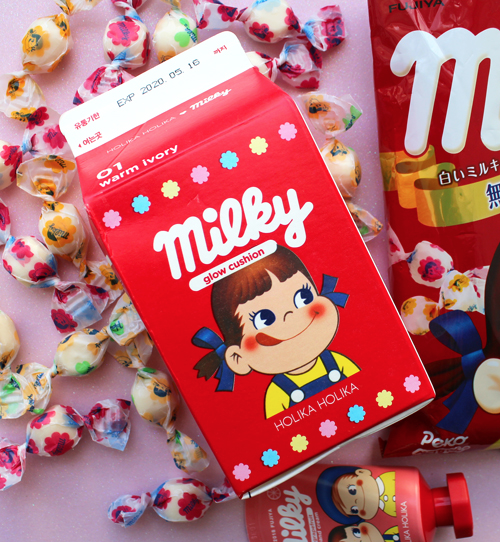
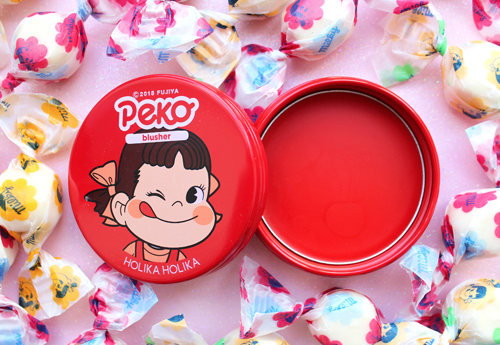
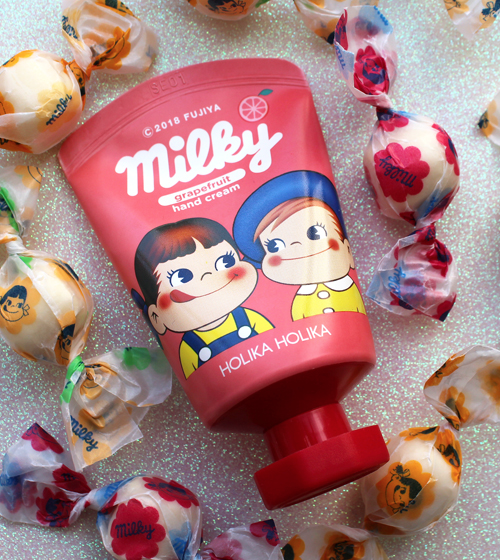
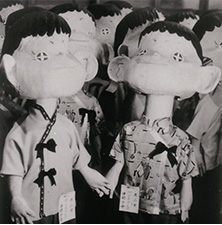
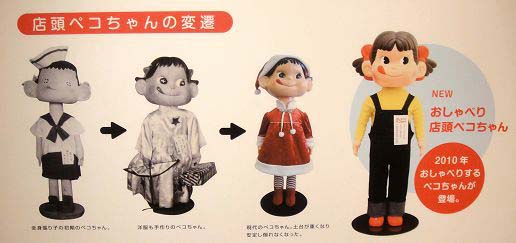


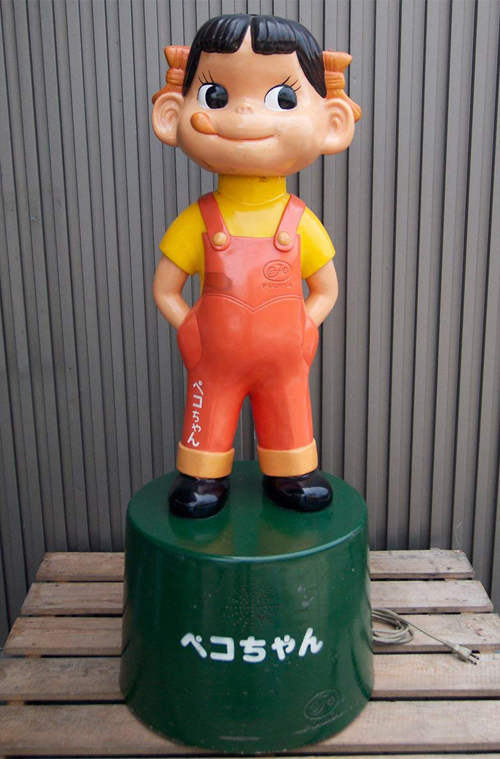
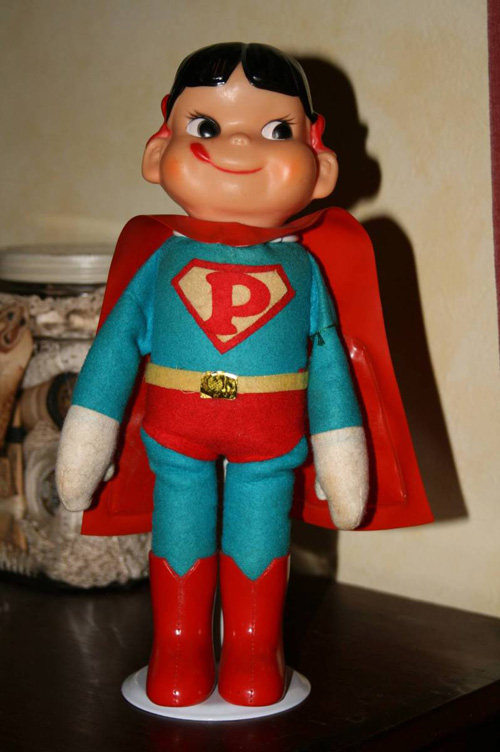
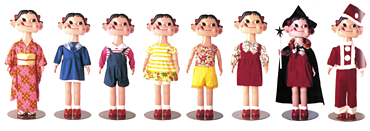
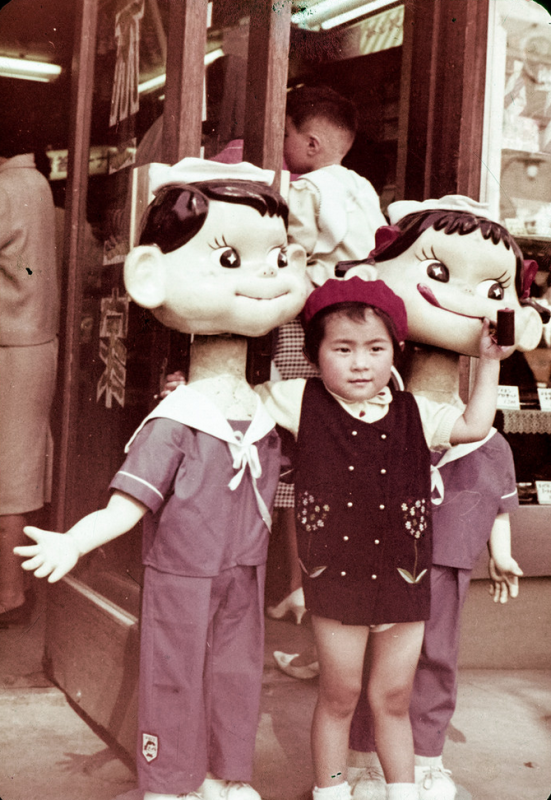
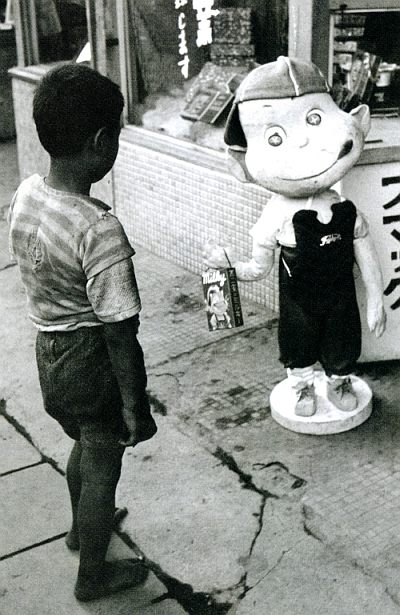
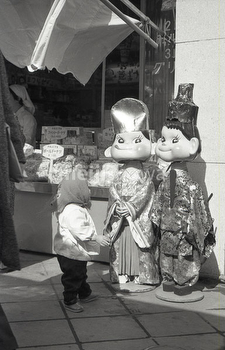
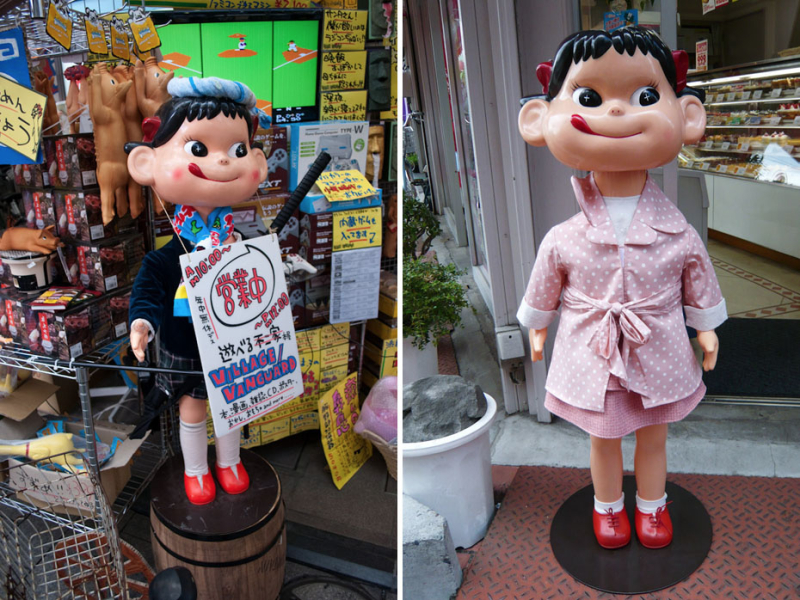
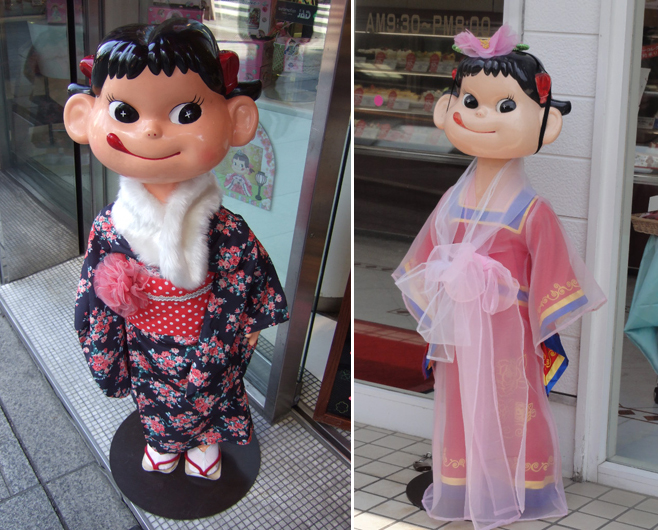

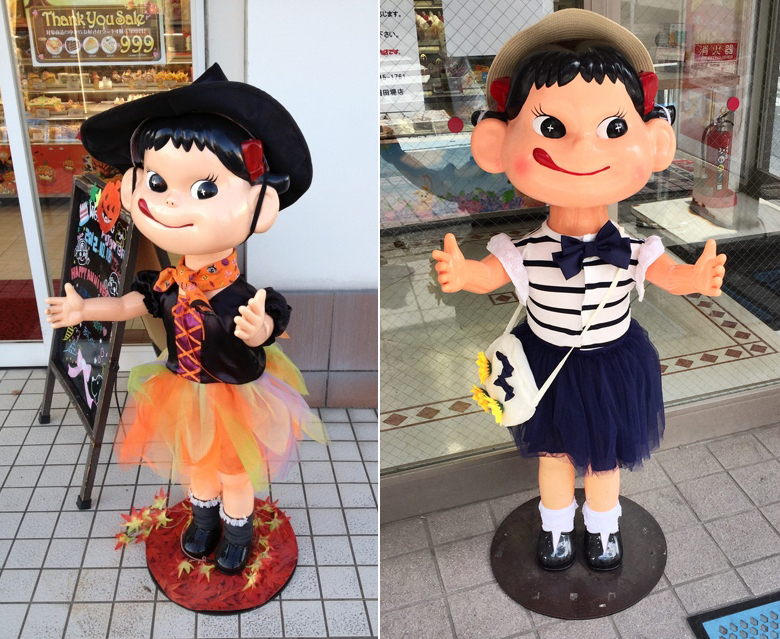
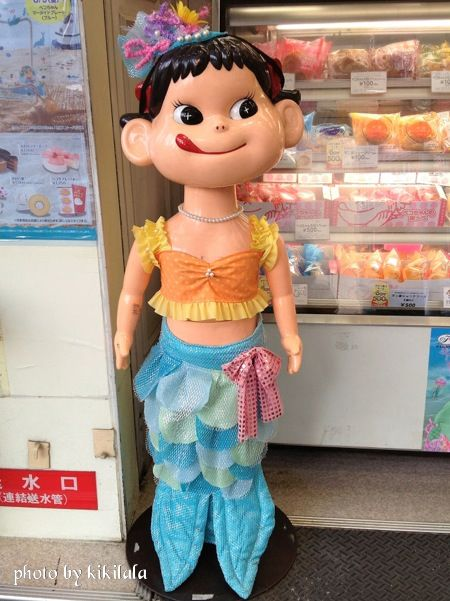
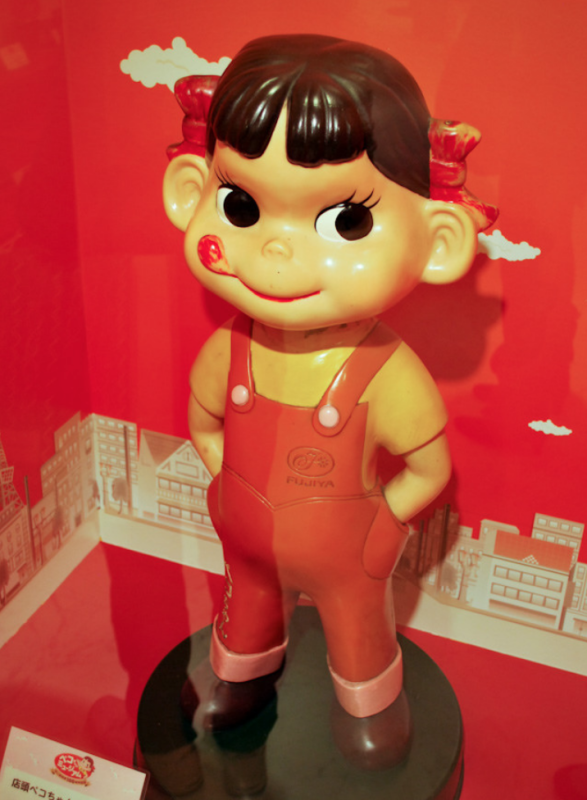
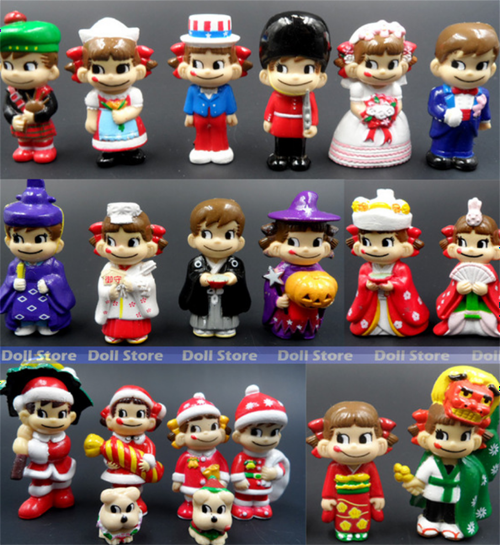
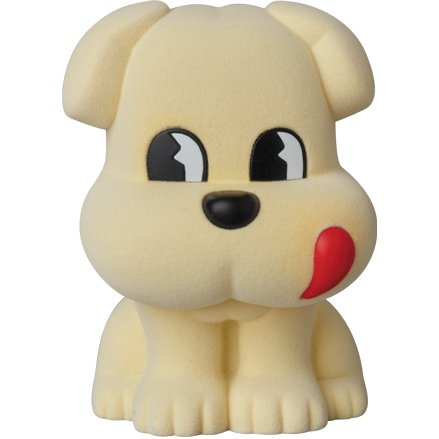
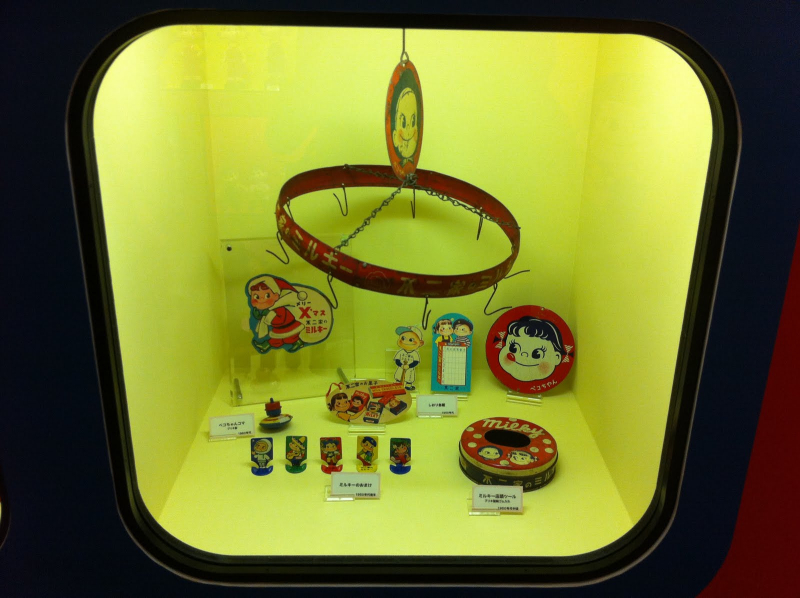

I bought the entire collection (well almost everything except the sheet mask and cheek patches…), as it rang a major childhood bell for me. I grew up eating the Fujiya candies, collecting PEKO tins! Thanks for featuring this, I felt a lot of people don’t know who she is and why she’s worth doing a collaboration with!
I bought the entire collection (well almost everything except the sheet mask and cheek patches…), as it rang a major childhood bell for me. I grew up eating the Fujiya candies, collecting PEKO tins! Thanks for featuring this, I felt a lot of people don’t know who she is and why she’s worth doing a collaboration with!
This post is very nostalgic for me: I did a homestay in Japan in 2001, when I was 13, and my homestay sister and her friends told me about Peko-chan. Apparently if there were three completely visible Peko-chan heads on a piece of Milky candy, that was good luck. I never heard the cannibal story, though! Yikes. It sounds like a ridiculous urban legend to me…
This post is very nostalgic for me: I did a homestay in Japan in 2001, when I was 13, and my homestay sister and her friends told me about Peko-chan. Apparently if there were three completely visible Peko-chan heads on a piece of Milky candy, that was good luck. I never heard the cannibal story, though! Yikes. It sounds like a ridiculous urban legend to me…